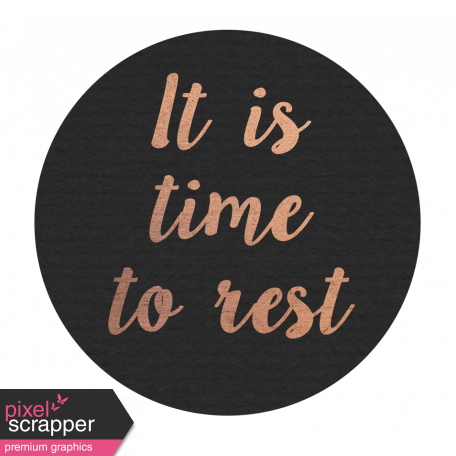- Rest Time
- Rest Time Music For Preschoolers
- Rest Time Music For Toddlers
- Rest Time Christmas Music
- Rest Time Clip Art
- Rest Time Between Weight Lifting Sets
Jan 20, 2018 Resting 1-3 minutes between sets is probably ideal for you. The higher your training intensity is for a given exercise and/or the more demanding it is on your body, the more you should stay nearer to the 2-3 minute range. The lower the intensity and/or the less demanding the exercise is, the more you should stay in the 1-2 minute range. An optimal rest interval for each work set is in the neighborhood of 10 minutes. Add to that all the rest time between your warm-ups of 135, 225, 315, 405, 495, 585, 675, and (perhaps) 730, and by the time you're done squatting, you're 90 minutes into your workout already. This recommendation has implications for your exercise menu as well.

The 9 Things You Need to Know
The 9 Principles of Rest Between Sets
New REST version avaiable. Bioinformatics derives knowledge from computer analysis of biological data, herein kinetic PCR. The expression results derived from real-time RT-PCR experiments must be analysed, normalised, compared with other genes and finally statistically processed. The National Institute of Standards and Technology - Time and Frequency Division maintains the standard for frequency and time interval for the United States, provides official time to the United States, and carries out a broad program of research and service activities in time and frequency metrology. Wishing you better sleep, peaceful meditations before sleep and inspired living. For the best sleep ever download your FREE meditation!
When one of my athletes inevitably asks, 'Coach, how long should I rest between sets?', I provide him with a list he can use to help him decide. Here are those same guidelines. After reading them, you'll understand why no one should ever say something as simple as, 'Rest 3 minutes between sets.'
1. Your performance on your next set indicates whether or not you rested long enough after your previous set.
There's only one reason to rest after performing a set in the first place, and that's to facilitate adequate recovery for a good performance on the next set. And, as it turns out, the term 'recovery' is defined as a return to a desired or at least expected level of performance.
So even though it might be difficult to determine how long you should rest after your first set of 5 when you're squatting for 5x5, you at least can determine if you rested long enough after you do your second set of 5. After all, if you rested for 2 minutes between your first set and your second set and you failed to hit 5 reps, you didn't rest long enough.
As you progress through your work sets, pay attention to accumulated fatigue, and if you barely made your last work set after a reasonably short rest, take a longer break before your next work set, and repeat the process with each subsequent set.

2. Rest less between earlier sets and longer between later sets.
This falls squarely into the 'common sense' category, but it bears repeating that fatigue accumulates over the course of a training session. That being the case, in an idealized situation, you'd rest slightly longer during each subsequent set of each workout.
The only exception is that your warm-up sets for each new exercise will require less rest than the work sets that follow.
3. As you work through your warm-up sets, rest periods should gradually lengthen.
If your next deadlift workout calls for 3 sets of 3 with 365 pounds, and your typical warm-up looks like 135x8, 185x6, 225x4, 275x2, and 315x1, your rest intervals might be along the lines of 45 seconds after the lift of 135, 60 seconds after the lift of 185, 90 seconds after 225, 2 minutes after 275, and 3 minutes after 315. Then maybe 4 minutes after your first triple with 365 and 5 minutes after your second triple.
4. The more weight on the bar, the more rest you should take.
In the previous example, I suggested hypothetical rest intervals for a lifter who does a hard 3x3 with 365. If, on the other hand, a 'hard' 3x3 for you is 495 pounds, your optimal rest intervals would be longer, perhaps between 6-8 minutes or even more.
Incidentally, this is one practical reason why the training of elite-level powerlifters is so specific to the 'big 3' lifts with minimal time allotted for assistance work. Imagine you're so strong that a tough squat workout is along the lines of 765 for 3 sets of 3.
An optimal rest interval for each work set is in the neighborhood of 10 minutes. Add to that all the rest time between your warm-ups of 135, 225, 315, 405, 495, 585, 675, and (perhaps) 730, and by the time you're done squatting, you're 90 minutes into your workout already.
Rest Time
This recommendation has implications for your exercise menu as well. You'll need more rest between hard sets of hack squats than you will between hard sets of hammer curls, for example.
5. Sets taken closer to failure should be followed with a longer rest period.
If you're doing sets at a rate of perceived exertion (RPE) of 7 (that's 3 reps from failure), you'll need less rest than you'd need for sets taken to 10 RPE (failure). Obvious, right?
6. Bigger, stronger people need more rest between sets than smaller, weaker people.
When you have more tissue to recover, you'll need longer time periods for that recovery to occur, and vice versa. IPF Powerlifting 52kg Women's World Champion Marisa Inda (314 squat, 209 bench, and 402 pull at 114 pounds) has often stated that her workouts are typically 45-60 minutes long.
Contrast that with the workout durations of Marisa's coach, super heavyweight powerlifter Chad Wesley Smith, who weighs over 300 pounds and who has the 10th highest super heavyweight total of all time, which are between an hour and 45 minutes and 2.5 hours.
7. When in doubt, rest more, not less.
In a recent study, T Nation contributor Dr. Brad Schoenfeld compared the effects of one minute versus three-minute rest intervals on both 1RM strength and muscular hypertrophy. The study lasted 8 weeks and involved 21 young male subjects. He found that the longer, 3-minute rest interval was significantly more effective than resting one minute for BOTH strength and hypertrophy outcomes.
The fact that longer rests are better for strength aren't surprising, but traditional bodybuilding culture has always emphasized very short rests intervals, so the results of this particular study may strike some as counterintuitive.
In the end, consider that if you rest too long, the only real downside is that your workout will be longer than necessary. On the other hand, if you don't rest long enough, you'll impair your performance on the next set.
8. Sometimes procrastination masquerades as rest, especially if the next set seems daunting.
Despite what I just said in point 7, people often rest longer than they need to. Parkinson's Law states: 'A task typically expands to fill the time allotted to it.' In other words – and particularly if you're not the most hard-driven personality – you might find that you can reduce the length of your rest breaks without consequence.
This is particularly true the smaller and weaker you are. There's definitely trial and error at play here, so experimentation is always a good idea.
9. Don't time your rests unless, or until, your workouts start becoming too long and you need to find ways to save time.
Timing rest intervals is a double-edge sword: On the one hand, it can be an annoying distraction that you might not need. On the other hand, if you suspect that you could get through your workouts a lot faster, it might be something to consider.
If you do decide to break out the stopwatch, here's a better way to do it. Rather than timing rests between each set, assign yourself a time limit for the completion of all sets performed for a given exercise.
Rest Time Music For Preschoolers
For example, you're planning to squat 315 for 4x6, and you give yourself 45 minutes for all warm-up and work sets. When you do this, you'll naturally put yourself under the gun, becoming more efficient with your rest intervals. You'll also find that when you assign time limits in this way, you'll be more mentally focused and less prone to distraction and procrastination.
More Complex Than You Thought?
Now you can appreciate the potential complexity of this topic. If you're a tiny, weak lifter doing your first warm-up set for reverse curls, you probably need about 5 seconds of rest. On the other hand, if you're a huge, crazy-strong, super heavyweight lifter and you're about to take your last set of 800-pound deadlifts, you might need more than 10 minutes.
For most of us, in most circumstances, rest between 2-4 minutes.
Related:
Related: The Smart Lifter's Guide to Rest Intervals
Related:
Related: Training Frequency and Rest Periods
Source
- Schoenfeld BJ, Pope ZK, Benik FM, Hester GM, Sellers J, Nooner JL, Schnaiter JA, Bond-Williams KE, Carter AS, Ross CL, Just BL, Henselmans M, Krieger JW. 'Longer Interset Rest Periods Enhance Muscle Strength and Hypertrophy in Resistance-Trained Men.' J Strength Cond Res. 2016 Jul;30(7):1805-12.


Rest Time Music For Toddlers
Popular & Trending
Rest Time Christmas Music
Scroll To TopRest Time Clip Art
Rest has a bad rap in our culture. Most of us think about rest as merely the absence of work—not something valuable in its own right. Sometimes, it’s even equated with laziness.
But nothing could be further from the truth. Macos el capitan usb installer.
Rest is an essential component of working well and working smart. In my new book, Rest: Why You Get More Done When You Work Less, I outline some of the fascinating research that shows how rest helps us to think, innovate, and increase our productivity, and what we can do to rest more effectively.

Rest Time Between Weight Lifting Sets
